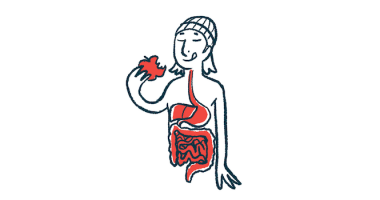Parkinson’s or essential tremor? Gut bacteria molecule may aid diagnosis.
SCFA levels were measured, tested in 109 study participants

Measuring levels of certain molecules made by gut bacteria could help to distinguish between Parkinson’s disease and essential tremor, another disorder that’s characterized by tremor as a main symptom.
That’s according to the study, “Association of fecal short-chain fatty acids with clinical severity and gut microbiota in essential tremor and its difference from Parkinson’s disease,” published in npj Parkinson’s Disease.
There is no single test to diagnose Parkinson’s; establishing a diagnosis requires tests to evaluate whether a person has symptoms of the disease. This can make it difficult to distinguish between Parkinson’s and other disorders with similar symptoms such as essential tremor.
Prior research has shown people with Parkinson’s have alterations in the gut microbiome — the community of bacteria and other microscopic organisms that make their home in the human digestive tract. For example, some studies have shown people with Parkinson’s have altered stool levels of short-chain fatty acids (SCFAs), a type of molecule produced by certain types of gut bacteria.
These prior findings imply looking at SCFA levels may be helpful in identifying Parkinson’s. However, there hasn’t been much study into whether and how SCFA levels are changed in essential tremor, and whether this differs from Parkinson’s. A team of scientists at Shanghai Jiao Tong University School of Medicine in China conducted a study to learn more.
“Our study aimed to identify specific fecal SCFA alterations in [essential tremor] patients and their differences from [Parkinson’s] patients,” the scientists wrote.
Lower levels of 2 SCFAs found in those with essential tremor
The researchers measured SCFA levels in samples from 37 people with Parkinson’s, 37 with essential tremor, and 35 people with no known neurological problems. The three groups were similar in terms of demographic factors like age and sex, and also in terms of smoking, alcohol use, and consumption of coffee or tea (all of which may influence the makeup of the gut microbiome).
Statistical tests showed that, compared with people with Parkinson’s disease, people with essential tremor had significantly lower levels of two SCFAs, isovaleric acid and isobutyric acid.
Compared with people without disease, patients with essential tremor had significantly lower levels of the SCFAs propionic acid, butyric acid, and isobutyric acid. Meanwhile, patients with Parkinson’s had significantly lower levels of propionic acid, acetic acid, and butyric acid compared with people without disease.
To assess whether levels of these SCFAs could distinguish between the groups, the researchers calculated a mathematical measure called the area under the receiver operating characteristic curve, or AUC. Simplistically, the AUC tests how well a particular test (i.e., SCFA levels) can tell the difference between two groups. AUC values range from 0.5 to 1, with higher values reflecting better ability to accurately distinguish between the two groups.
Results showed the AUC for distinguishing between essential tremor and Parkinson’s was 0.743, based on the two SCFAs that differed significantly between these groups. For distinguishing between people with essential tremor or with no disease, the AUC was calculated at 0.751. For the difference between Parkinson’s patients and people without disease, the AUC was 0.651.
Based on these data, the researchers concluded that assessing SCFA levels could accurately distinguish people with essential tremor from those with Parkinson’s or without any neurological disease.
In further analyses, the researchers found that Parkinson’s patients with higher levels of the SCFA caproic acid also tended to report more severe symptoms, as measured by Movement Disorder Society‐Sponsored Revision of the Unified Parkinson’s Disease Rating Scale scores. Also, among both Parkinson’s and essential tremor patients, patients with lower levels of the SCFA propionic acid tended to report worse autonomic symptoms (problems with unconscious bodily processes such as sweating, digestion, and regulating blood pressure).
Among all participants, with or without disease, individuals with higher levels of two SCFAs, propionic acid and acetic acid, were less likely to report fecal incontinence (difficulty controlling bowel movements).
These findings “indicated a close relationship between SCFAs and” essential tremor, the researchers wrote. They cautioned, however, that it’s impossible to make any conclusions about cause and effect from this study, which evaluated SCFA levels at a single point in time. They also noted this study is limited by incomplete data on diet and other differences between the groups that may have influenced the results.
“Further longitudinal follow-up studies with serial measurements of fecal SCFAs as well as animal studies for mechanistic investigations are warranted,” the team wrote.







